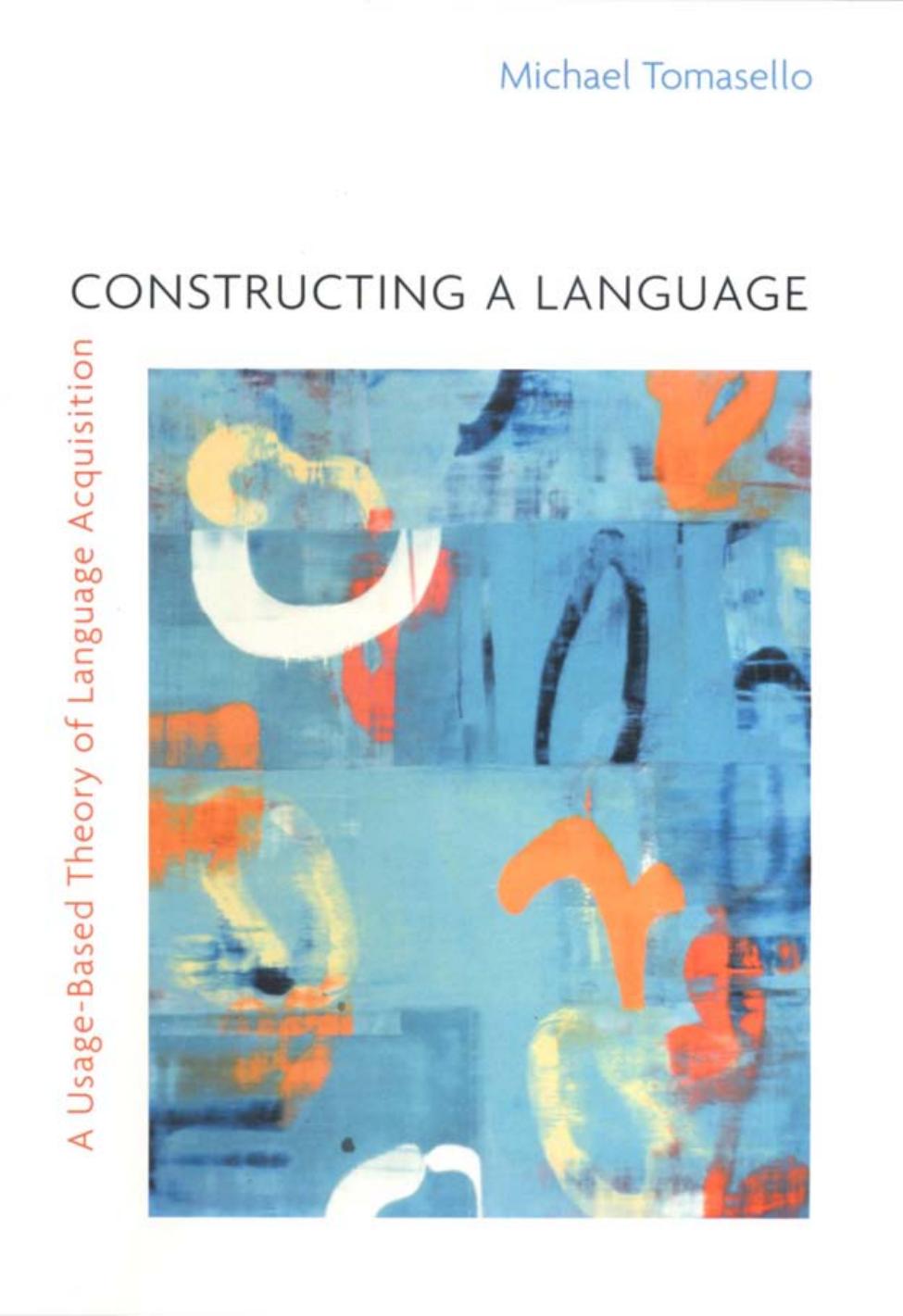Constructing a Language: A Usage-Based Theory of Language Acquisition by Michael Tomasello

Author:Michael Tomasello [Tomasello, Michael]
Language: spa
Format: epub, pdf
Amazon: 0674017641
Published: 0101-01-01T00:00:00+00:00
SIX
Nominal and Clausal Constructions
Think of the tools in a tool-box: there is a hammer, pliers, a saw, a screw-driver, a rule, a glue-pot, glue, nails, and screws. The functions of words are as diverse as the functions of these objects . . . Of course, what confuses us is the uniform appearance of words when we hear them spoken . . . For their application is not presented to us so clearly.
âLUDWIG WITTGENSTEIN
ACROSS the languages of the world utterance-level constructions are constituted by two major types of sub-constructions: nominals and clauses.1 Actually, in real discourse, nominals and clauses are often used alone as full utterances, which is one strong piece of evidence for their reality as functionally coherent and independent constructions. Thus, when someone is asked âWho is that over there?â a reasonable utterance in response is the nominal âBillâ or âMy father,â and when someone is asked further âWhat is he doing?â a reasonable utterance in response is the clause âSleepingâ or âPlaying tennis.â Of course many utterances are constituted by some combination of nominals and clauses: âMy father is playing tennis.â
Nominals are used by people to make reference to âthings.â In many theories, the prototype is concrete objects (people, places, and things). But it is well known that nominals may be used to refer to basically any kind of entity at all, real or imagined. Thus, when the need arises, there are ways of construing actions, properties, and relationships as if they were things, on analogy with concrete objects. For example, we may say such things as Skiing promotes good health, That blue looks awful in my painting, and Bigger is better. Indeed, there are some languages that do not really have a clear-cut class of concrete nouns specialized for the single function of reference, such as dog and tree, but rather they have a single class composed of words that can be used as either nouns or verbs depending on whether they are used in nominals or clausesâsimilar to English words such as cut (I cut the bread, Thereâs a cut on my finger) and hammer (Iâm hammering in this nail with my hammer). Langacker (1987b) notes that the discourse function of identifying the participants in events and states of affairs requires language users to construe whatever they wish to talk about as a âthing,â so it can be referred to, no matter its âtrueâ ontological status. And the major characteristic of a âthingâ is that it is bounded, often spatially but sometimes only conceptually (as in The disappointment lasted all night) in a time-stable manner (Givón, 1979).
Clauses (verb phrases) are used for a variety of discourse purposes, sometimes referred to together (though somewhat misleadingly) as predication. Clauses are about events that unfold in time, or else states that remain the same over some discernible span of time. They are thus used for less time-stable entities than are nominals (Givón, 1979). In the analysis of Hopper and Thompson (1984, 1985) the structure of predication derives from the
Download
Constructing a Language: A Usage-Based Theory of Language Acquisition by Michael Tomasello.pdf
This site does not store any files on its server. We only index and link to content provided by other sites. Please contact the content providers to delete copyright contents if any and email us, we'll remove relevant links or contents immediately.
Spare by Prince Harry The Duke of Sussex(5072)
Machine Learning at Scale with H2O by Gregory Keys | David Whiting(4178)
Fairy Tale by Stephen King(3220)
Will by Will Smith(2792)
Hooked: A Dark, Contemporary Romance (Never After Series) by Emily McIntire(2497)
The Bullet Journal Method by Ryder Carroll(2486)
Rationality by Steven Pinker(2291)
Can't Hurt Me: Master Your Mind and Defy the Odds - Clean Edition by David Goggins(2225)
It Starts With Us (It Ends with Us #2) by Colleen Hoover(2197)
Friends, Lovers, and the Big Terrible Thing by Matthew Perry(2119)
The Becoming by Nora Roberts(2087)
Love on the Brain by Ali Hazelwood(1964)
The Strength In Our Scars by Bianca Sparacino(1776)
HBR's 10 Must Reads 2022 by Harvard Business Review(1776)
A Short History of War by Jeremy Black(1762)
Leviathan Falls (The Expanse Book 9) by James S. A. Corey(1648)
515945210 by Unknown(1599)
A Game of Thrones (The Illustrated Edition) by George R. R. Martin(1588)
Bewilderment by Richard Powers(1538)
